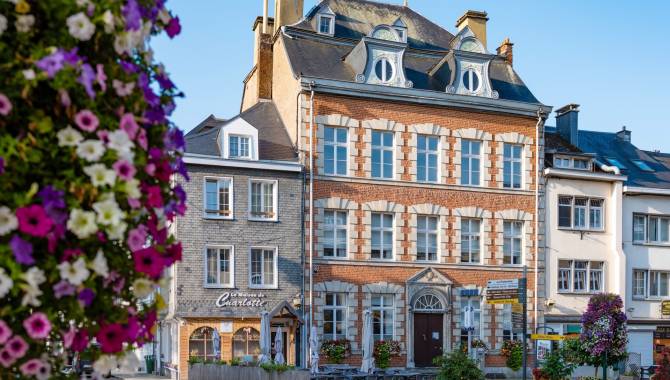Villers House
1/3



Photo: malmedy maison villers 06 c christian charlier ostbelgien.eu , CC BY ,East Belgium Tourist Agency NPO

Photo: malmedy maison villers 09 kueche c christian charlier ostbelgien.eu , CC BY ,East Belgium Tourist Agency NPO

Photo: malmedy maison villers 11 360 c christian charlier ostbelgien.eu , CC BY ,East Belgium Tourist Agency NPO



Description
This three-storey patrician house, Villers House, is one of the most beautiful houses in Malmedy's cultural heritage. The unique building, built in 1724 by the tanners Elisabeth and Joseph Dester, has survived the centuries with its original interior design. Wooden panelling, stuccos, Delftware and large canvas paintings bear witness to the expertise of the craft guilds of the 18th century. In 2006, Villers House was added to the list of the extraordinary cultural heritage of Wallonia. It reflects not only the taste and a certain refinement, which was typical of the 18th century, but also the economic output of the tanner families, which contributed to the prosperity of the town.
Hunting room
The first floor features the hunting room, the largest and most opulent room in the building. Enormous canvas paintings adorn it. The large hunting room is the heart of this patrician house. There are hunting scenes to be seen everywhere, and they offer an incomparable visual spectacle.
As in the 16th and 17th centuries, the fireplace played an important decorative role in the Meuse-Rhenish houses of the 18th century. The way the fireplace was designed followed the stylistic trend and drew on various building materials: carved wood, wood and marble in combination with Delftware or in the Delft style, and a fireplace frame in cast iron or brass.
The tall, double, ornamented doors have a fine decoration of shell-shaped ornaments and natural patterns. The décor above the door consists of a carved wooden frame with a painting.
The hunting room has a beautiful glass chandelier. These chandeliers were very widespread in patrician houses and bourgeois living rooms. They were made in Namur, in Bohemia (for imported parts), or in Liège. From the 16th century onwards, the town was a major producer of glass in the Venetian style. The first chandeliers of this kind appeared in the mid-18th century.
The music room
This small room, right next door to the hunting room, owes its name to a small stage, which may have been used for the performance of quartets. Again, it's the decoration that makes this room so special and beautiful. As in the hunting room, large paintings cover the walls.
The motifs depicted on the canvases are homogeneous and focus on the diversity of the fauna and flora.
The marble fireplace comes from Saint-Rémy. Near Rochefort, the abbey of the town mined marble that was among the most beautiful in all Belgium.
The kitchen
The kitchen is equally remarkable. Time seems to have stood still here. With its black, heat-resistant tiles, which feature warriors' heads, the enormous fireplace attracts everyone's gaze. Delft stoneware adorns somewhat more than the lower half of the walls, that section being topped by an impressive mantelpiece dating from the early 18th century. An old water pump and an old bluestone tub hint at the dynamism that presumably once held sway in this room. Through one of the windows, we can see the little garden, which endows the house with a poetic atmosphere.
Carte
Villers House
Chemin-rue 11
4960 Malmedy